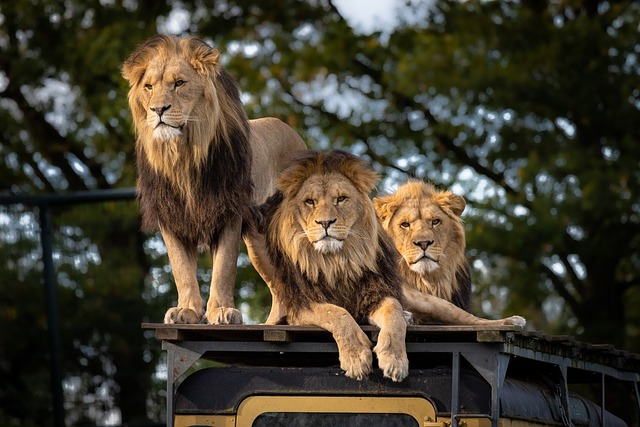
Introduction
Climbing Mount Kilimanjaro is an adventure of a lifetime, but it requires thorough preparation to ensure a safe and successful trek. One of the most crucial aspects of preparation is packing the right gear. Whether you are a seasoned trekker or a first-time climber, having the right equipment can make a significant difference in your comfort, performance, and overall experience. In this guide, we will outline the essential packing list for a Kilimanjaro climb, covering everything from clothing to medical supplies, ensuring you are fully equipped for the journey.
Clothing Essentials
Mount Kilimanjaro tours expose climbers to a wide range of temperatures and weather conditions, from hot and humid rainforest zones to freezing summit temperatures. Proper layering is key to staying comfortable and protected.
Base Layers:
- Moisture-wicking thermal tops and bottoms (2-3 pairs)
- Lightweight, breathable underwear (preferably synthetic or wool)
Mid Layers:
- Fleece or down jacket for insulation
- Insulated hiking pants for colder conditions
Outer Layers:
- Waterproof and windproof jacket (GORE-TEX recommended)
- Waterproof hiking pants
Head and Hand Gear:
- Warm beanie or balaclava
- Sun hat with a wide brim
- Insulated gloves and glove liners
Footwear and Socks
A good pair of boots can make or break your climb. Your feet will endure long hours of trekking, so investing in quality footwear is essential.
- Waterproof, high-quality hiking boots (well broken in)
- Gaiters to keep dirt and snow out of boots
- Moisture-wicking socks (4-6 pairs, preferably wool or synthetic)
- Camp shoes (lightweight and comfortable for wearing in campsites)
Sleeping Gear
A good night’s sleep is crucial for recovery, especially in the high-altitude conditions of Mount Kilimanjaro tours.
- Four-season sleeping bag rated for -10°C to -20°C
- Sleeping bag liner for extra warmth
- Inflatable or foam sleeping pad for insulation and comfort
Backpacks and Bags
Proper storage and carrying systems will help distribute weight evenly and keep essential items accessible.
- Large duffel bag (80-100L) for porters to carry your main gear
- Daypack (30-40L) for personal items such as snacks, water, and extra layers
- Waterproof bag covers or dry bags for protecting gear from rain
Hydration and Nutrition
Staying hydrated and properly fueled is vital for maintaining energy levels and preventing altitude sickness.
- 3L hydration bladder (e.g., CamelBak)
- Two 1L water bottles (insulated for cold temperatures)
- Electrolyte tablets or rehydration powders
- High-energy snacks (nuts, protein bars, trail mix)
Health and First Aid
The effects of altitude can be unpredictable, so it’s essential to carry a well-stocked first-aid kit.
- Prescription medications (if applicable)
- Diamox (altitude sickness prevention, consult your doctor)
- Pain relievers (ibuprofen, acetaminophen)
- Blister treatment (moleskin, bandages, antiseptic)
- Lip balm with SPF
- Sunscreen (SPF 50+)
- Insect repellent (for lower altitudes)
Personal Hygiene and Toiletries
Basic hygiene is crucial for maintaining health and comfort on the trail.
- Biodegradable wet wipes
- Hand sanitizer
- Travel-size toothbrush and toothpaste
- Quick-dry towel
- Toilet paper and ziplock bags (for waste disposal)
Trekking Gear and Accessories
Additional trekking gear will improve your efficiency and safety during the climb.
- Trekking poles (adjustable, lightweight)
- Headlamp with extra batteries
- Sunglasses (UV protection, polarized preferred)
- Multi-tool or Swiss Army knife
- Lightweight camera or smartphone for capturing memories
Documents and Money
Even though porters and guides handle logistics, you will still need essential documents.
- Passport and visa (if required)
- Copies of travel insurance and itinerary
- Cash (for tipping guides and porters)
Final Tips for Packing Efficiently
Packing smart will make your journey easier and more enjoyable. Here are some final tips:
- Test Your Gear: Before the climb, wear your boots and try your gear to ensure comfort.
- Layer Wisely: Pack clothes that can be layered easily for varying temperatures.
- Minimize Weight: Keep your daypack light by only carrying essentials.
- Waterproof Everything: Use dry bags or pack items in plastic bags to protect them from moisture.
- Listen to Your Guides: They have invaluable experience and can advise you on packing adjustments.
Conclusion
A well-prepared packing list is crucial for a successful Kilimanjaro climb. Whether you are embarking on a solo adventure or joining organized Mount Kilimanjaro tours, having the right gear will enhance your comfort, safety, and overall experience. By following this comprehensive packing guide, you can focus on the breathtaking journey ahead, knowing you are fully equipped for the challenge.





Leave a Reply